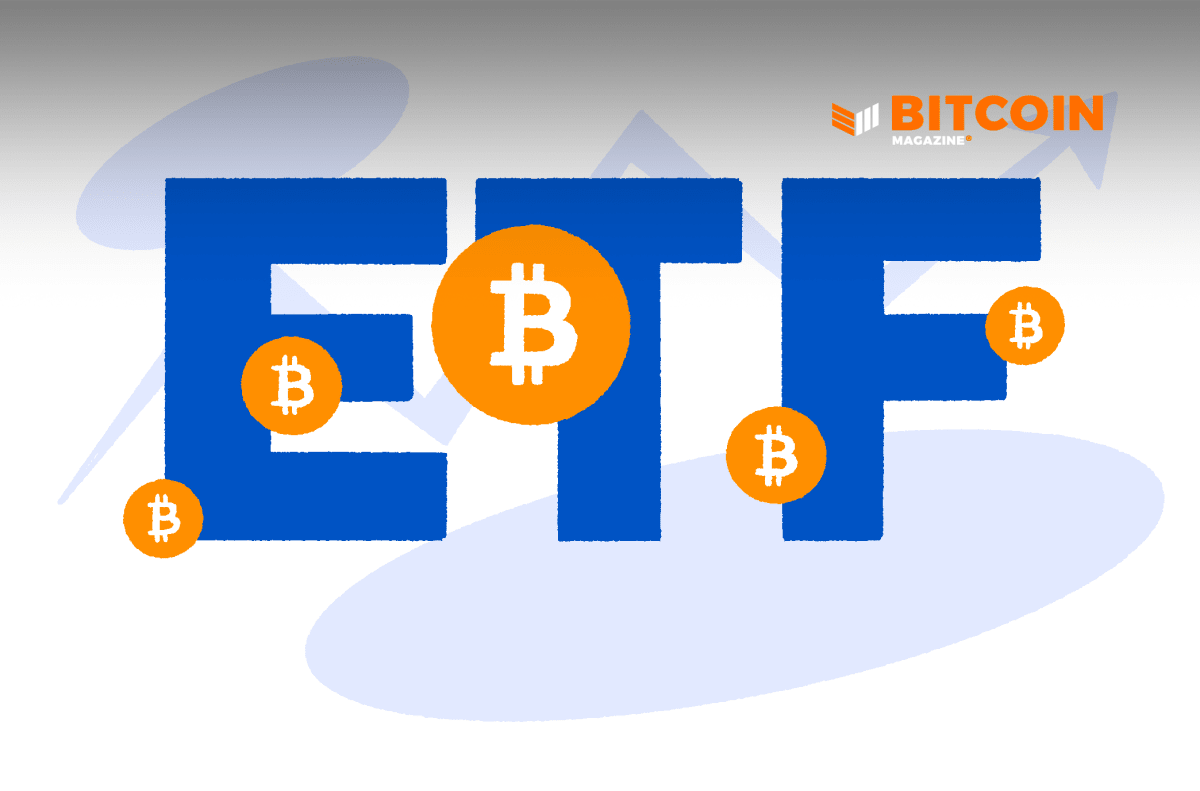An Argument Against KYC Bitcoin That Everyone Can Understand
The reasons that KYC should never be the default are obvious when examined from a lens of security and privacy.
This is an opinion editorial by Heady Wook, privacy advocate and contributor to Bitcoin Magazine.
Introduction
In the Bitcoin white paper, Satoshi Nakamoto cited the need for a cash system over the internet without the need for a trusted third-party. A few months later, Nakamoto introduced the Bitcoin network to the world. In block zero (the “genesis block”) of the Bitcoin blockchain, the following message was included: “The Times 03/Jan/2009 Chancellor on brink of second bailout for banks.” On one hand, the quote references a UK news piece outlining Chancellor Alistair Darling’s consideration of a second bailout for banks, which meant pumping billions more British pounds into the economy. On the other hand, the quote references Nakamoto’s frustration and distrust of the traditional financial system and, more broadly, trusted third parties. This is made clear in the white paper abstract and the first paragraph’s opening lines. In another section of the white paper, Nakamoto compares the traditional finance privacy model with Bitcoin’s privacy model. In Bitcoin’s model, trusted third-parties are no longer responsible to safeguard an individual’s privacy by limiting access to information. In fact, no personal information is required at all. With Bitcoin, individuals can maintain privacy simply by “keeping public keys anonymous.” In an early Bitcoin forum post, Nakamoto wrote:
“We have to trust them with our privacy, trust them not to let identity thieves drain our accounts […] placing trust in the system administrator to keep their information private. Privacy could always be overridden by the admin based on his judgment call weighing the principle of privacy against other concerns, or at the behest of his superiors. […] It’s time we had the same thing for money. […] without the need to trust a third party middleman, money can be secure and transactions effortless. […] The result is a distributed system with no single point of failure. Users hold the [private] keys to their money and transact directly with each other.”
Nakamoto was concerned about trusting third parties with both privacy and money. Specifically, Nakamoto cited a few points of failure of the traditional finance privacy model: bad actors or identity thieves, lack of administrator integrity, and authoritative demands from “superiors,” such as a government. One manifestation of these failures is showcased by the long history of currency-debasing governments (see: The Bitcoin Standard) and includes the event cited within the genesis block. Alluding to Bitcoin, Nakamoto suggested these issues are solved with “a distributed system with no single point of failure.”
Bitcoin has been a long time coming. The conversation about “private,” “sovereign” or “electronic” currency had gone on by others at least a decade before Bitcoin’s inception. For instance, “A Cypherpunk’s Manifesto” discusses anonymous transaction systems on the internet, “The Sovereign Individual” predicts a private and permissionless internet currency, and “Cryptonomicon” describes an anonymous digital gold. Nakamoto designed Bitcoin with such properties: Bitcoin is pseudonymous, it can be used privately and it is permissionless. However, “know your customer” regulations1 (KYC) have proven to be pervasive, persistent and problematic for users looking to benefit from such properties.
Along with bitcoin’s price action from 2020 through 2021, bitcoin companies have experienced lots of growth. Coinbase, for example, reported reaching over 35 million users in over 100 countries by the end of 2020. Furthermore, in 2022 Coinbase took out a 60-second Super Bowl ad featuring a floating QR code which reached over 20 million hits within just one minute. Surojit Chatterjee, chief product officer at Coinbase, went so far as to call it “historic and unprecedented.” However, Coinbase is only one of many successful companies. According to CoinGecko, Coinbase ranks sixth in terms of the most trusted exchanges with Binance (#1), OKX, FTX, KuCoin and Huobi Global (#5) respectively taking the lead. Together, these exchanges have KYC’d millions upon millions of users. These massive KYC efforts are in direct contrast with the pseudonymous, permissionless, P2P, cash system with no third parties developed by Nakamoto. Furthermore, KYC creates honeypots of user information and gives rise to a permissioned social system.
KYC Creates Honeypots Of User Information
Every time an individual signs up for an exchange or related service they are likely asked to KYC themselves — that is, provide personally identifiable information (PII). PII typically consists of a selfie, drivers license, social security number, address, email and phone number. PII is usually stored by an outside service, such as Prime Trust. When Nakamoto said, “We have to trust them with our privacy [and] trust them not to let identity thieves drain our accounts,” the reference to “them” can be thought of as exchanges and their partner service providers. All these third parties come with inherent risks, such as bad actors (e.g. insider job; BitThumb, 2019), lack of administrator integrity (e.g. BitConnect exit scam) and susceptibility to government demands (e.g. IRS forces compliance). When Nakamoto references “identity thieves,” he refers to data breaches in which hackers gain access to and profit from PII, either by directly stealing funds, selling the PII to interested parties or extortion. Given all the PII provided, KYC creates a honeypot of user information that is ripe for exploitation.
Data breaches have become more and more prevalent over the years:
- 2016 Data Security Incident
- T-Mobile Data Breach Exposed The Personal Info Of More Than 47 Million People
- A Hacker Gained Access To 100 million Capital One Credit Card Applications And Accounts
- U.S. Postal Service Exposes 60 Million Users in API Snafu
- Equifax Data Breach May Affect Nearly Half The U.S. Population
- Target Settles 2013 Hacked Customer Data Breach For $18.5 Million
- JPMorgan Chase Hacking Affects 76 Million Households
- CVS And Walmart Canada Are Investigating A Data Breach
- Sony Pictures Website Hacked, 1 Million Accounts Exposed
- 235 Million Instagram, TikTok And YouTube User Profiles Exposed In Massive Data Leak
According to Statista, data breaches have increased over 500% from 2005 through 2020. Furthermore, according to the Cost of Data Breach Report, 80% of all data breaches in 2019 included customer PII (name, credit card information, health records and payment information). Data breaches may also include more sensitive types of PII, such as social security number, driver’s license number or biometrics.
All trusted-required third-parties are susceptible to a data breach, including bitcoin companies. For instance, consider the Ledger hack of July 2020. In an official statement by the Ledger CEO, “1 million email addresses had been stolen as well as 9,532 more detailed personal information (postal addresses, name, surname and phone number).” That same year, the Ledger customer database was dumped onto Raidforum, a database sharing and marketplace forum. Thereafter, several Ledger users reported phishing attempts, extortion and threatening emails, including threats of kidnapping and violence, such as murder.
Reddit user Cuongnq received a phishing email prompting him to “download the latest version of Ledger Live” and to follow the instructions to set up a “new PIN” for his wallet. Another Reddit user, Silkblueberry, received an email stating that hackers had videos of him “masturbating to porn” and that they would post the videos publicly unless he sent them bitcoin as payment. Silkblueberry saw through the ploy. However, the hackers resorted to more extreme measures, threatening to associate his email with “child porn sites” and frame him as a “child predator” if he did not send them $500 in bitcoin. Yet another user received a phone call from an unknown man demanding payment. The man threatened he would “show up to [his] house, kidnap [him], and ‘stab to death’ any relatives living at [his] address” if he did not send a payment by midnight that night.
The Ledger hack is one example that illustrates how damaging an exploited KYC honeypot can be. Still, some might suggest that KYC services are needed because they offer an easy on-ramp for newcomers and that exposure is worth the risk. To this, one can point to the many non-KYC alternatives known to preserve individual privacy and security. Furthermore, these non-KYC alternatives have become easier over time with the help of several guides and resources. These non-KYC alternatives include: (1) Using decentralized peer-to-peer exchanges like Bisq Network or Hodl-Hodl to buy bitcoin; (2) buying privately from a bitcoin ATM; (3) buying or selling face-to-face or selling goods and services at a bitcoin meetup; and (4) mining for bitcoin at home.
Others might cite the use of bitcoin in criminal activity and suggest KYC provides individuals with the peace of mind that one is not inadvertently supporting illicit activity. However, bitcoin’s use in criminal activity is small compared to that of the U.S. dollar. In 2017 during a judiciary committee hearing, Deputy Assistant Secretary of the Office of Terrorist Financing and Financial Crimes, Jennifer Fowler, testified that “although virtual currencies are used for illicit transactions, the volume is small compared to the volume of illicit activity through traditional financial services.” Given the differences in volume, it is unlikely one may inadvertently support criminal activity by buying non-KYC bitcoin. This becomes even more unlikely when one buys or sells peer-to-peer at a local bitcoin meetup or buys from a bitcoin ATM.
Bitcoin was designed in part as pseudonymous, yet there is an alarming level of KYC taking place which completely undermines this property. Millions of users all over the world are tying their identity to their bitcoin and every one of them is contributing to the creation of honeypots of user information. This remains true even in the face of overwhelming evidence that data breaches have become almost an everyday occurrence. Rather than sacrificing pseudonymity, taking on additional risk or contributing to the problem, users should instead be part of the solution and take back their pseudonymity, reduce risks and protect PII by using non-KYC alternatives.
KYC Gives Rise To A Permissioned Social System
The Bitcoin network is a permissionless cash system outside the control of any third party. However, the majority of individuals are not using bitcoin this way. Instead, individuals have become reliant on third-party KYC services, such as bitcoin exchanges, yield platforms and hosted mining, among others. Not only does KYC undermine your pseudonymity, it also undermines your transactional privacy. This is true even after taking custody of your bitcoin. Unlike physical cash, where a bank cannot track what you do with it after withdrawal, a third-party, such as an exchange, is able to track what you do with your bitcoin after it has been withdrawn. That is, until the proper privacy measures are taken, such as participating in a coinjoin2.
Even if an identity can be obfuscated from an individual’s bitcoin transactions, the KYCing third party still retains all the user’s personally identifiable information (PII), including name, address, selfies and total purchase amount. Armed with PII and the ability to spy on transactional behavior, KYC gives rise to a permissioned social system. There are many examples for how KYC gives rise to a permissioned social system (e.g. limits and restrictions; intrusive verification measures; address whitelisting; and state interventions). This section focuses on CoinJoin as an example of a forbidden behavior within a permissioned social system. CoinJoin was selected given the important role it plays in everyday privacy.
Since Bitcoin is a public ledger, it is good practice to “make every spend a CoinJoin.” This is true for two reasons. First, CoinJoining limits any inferences a spying third-party might be able to draw up from one’s transaction history. Second, CoinJoining protects others from peering into one’s personal finances. Reason one is important because, as discussed above, a KYCing third-party can track what one does with their bitcoin and CoinJoining can help users gain forward-looking privacy. Reason two is important because, unlike cash or debit/credit cards where a merchant ( the payee) cannot peer into a payer’s finances (e.g. bank account totals), with bitcoin payee’s can peer into a payer’s finances — at least, the UTXO being spent. This is akin to handing out one’s bank statement with every transaction.
If you take a moment to ponder some of the situations that may arise from such a situation, you will quickly realize the implications this has on privacy. One caricatured example is put forth by Samourai Wallet: “Imagine if your church pastor was able to see your OnlyFans subscription when you place a dollar bill into the offering plate.” The dollar bill here represents a typical bitcoin transaction. A CoinJoin would have provided the user in this example the privacy needed to avoid this awkward situation by obfuscating the payment’s transaction history. In another more extreme example, imagine paying someone a small amount but using a large UTXO (akin to taking out an enormous gold coin just to shave a tiny portion off). The person receiving the payment would be able to see that the payer holds a significant amount of bitcoin. This might place the payer at a higher risk for a five-dollar wrench attack. A CoinJoin would have broken up a large UTXO into smaller UTXOs, reducing the payee’s ability to determine a payer’s holdings; they only see that you’re spending from pocket change. Given these examples, it becomes clear that Bitcoin lacks essential qualities found in physical cash that CoinJoin can make up for. Despite the benefits that CoinJoin provides users, KYC third-party services operate on the false premise that CoinJoining is malicious or risky and prohibit its use. With CoinJoin prohibition as a common practice among some of the most popular exchanges, a permissioned social system has effectively designated CoinJoins as “bad.”
Take BlockFi for example. They have a “prohibited uses” page stating the intent to maintain “a policy of strict regulatory compliance” and therefore prohibits deposits and withdrawals to or from: Mixing services, peer-to-peer and other exchanges which do not have KYC, gambling sites and dark net marketplaces. Furthermore, BlockFi “retains the right to return funds and freeze/close accounts as necessary.” BlockFi is only one of many exchanges known to prohibit or flag CoinJoins. For instance, in one of the more extreme examples, Reddit user Bujuu reported his exchange account was closed due to the “amount and frequency” of his CoinJoin transactions. The exchange, Bitvavo, claimed Bujuu posed an “unacceptable risk” and closed his account as a measure of mitigation. Later Bujuu said, “It kinda bugs me that I’m not allowed to do what I want with my BTC, that it’s all being monitored.” CoinJoin prohibition is perhaps one of the clearest examples of how KYC gives rise to a permissioned social system.
Several other users have reported milder experiences. One user claimed, “@bottlepay [has] rejected my incoming btc transaction due to the coins having been in samourai wallet and/or mixed with @SamouraiWallet #Whirlpool / If you have sent mixed coins you will get stung.” This user reported this issue upon the deposit of funds which demonstrates a backward-looking analysis on his coin’s history. A similar level of intrusion has been reported by others. For instance, another user received an email from Paxos stating, “We noticed that a BTC withdrawal from your account has potentially been sent to a known bitcoin mixing service. This type of transaction is not permitted on the platform. Please confirm whether the funds have been sent to a mixing service.” This time the issue arose upon the withdrawal of funds which demonstrates a forward-looking analysis on the coin’s history. Furthermore, Riccardo Masutti claimed “@bitwala sent [him] an email 3 days ago about a couple of post-CoinJoin transactions that happened almost 6 MONTHS AGO” and Kristapsk claimed he received “an e-mail from @BitMEX about [an] old #Bitcoin deposit transaction (last summer) that ‘may be connected with activity that is against 1.1(a) of the HDR Terms of Service.’, it was @joinmarket coinjoin.” These last two examples demonstrate the depth of chain analysis conducted by KYCing third parties.
Taken together, one can see how pervasive a permissioned social system can be. Users want to reap the benefits of a CoinJoin yet CoinJoining is considered prohibited behavior by many major third-party KYC exchanges (or related services). This general distaste for CoinJoin, along with blatant chain analysis, places individuals who KYC in a vulnerable position. Individuals who KYC are prohibited from exercising basic privacy rights or they face punitive measures if they do. In either case, KYC’d individuals are being spied on. Any reasonable individual would agree this is not a good position to be in, especially when participating in an independent and alternative cash system with no third parties. Despite the clear benefits that CoinJoin has to offer, the current view is that CoinJoins are too “risky.” On a CoinJoin panel at the Bitcoin 2022 conference, Craig Raw, founder of Sparrow Wallet, said:
“If we use the tools [i.e. CoinJoin] that we have today, it changes the mindset of people and it changes how society views it. If CoinJoin becomes a widely used thing today, then that will change the way that society views it and I think that it is important not to wait too long and to actually use the tools because… it changes the way that the rules and regulations of the world will form.”
According to Raw, CoinJoin normalization is a function of its use. Therefore, individuals must take it upon themselves to exercise their rights to privacy. This cannot be accomplished from within a permissioned system, nor will it be granted. Rather, CoinJoin normalization must be accomplished outside of a permissioned system, such as within the Bitcoin network as it was designed to be used — without permission.
Conclusion
KYC creates honeypots of user information and gives rise to a permissioned social system. When you KYC, you must provide a lot of sensitive personal information which contributes to the honeypot. This action alone is enough to negate pseudonymity given an identity has been associated with your bitcoin holdings. Furthermore, individuals must trust that third parties will keep sensitive information safe. Further, when you KYC, you voluntarily enter into a permissioned relationship with a third party. That is, you must abide by the rules set in place by the third party or potentially face punitive measures, such as asset seizure, account closure or frozen assets. Given the important role it plays in everyday privacy, CoinJoin is an example of a forbidden behavior within a permissioned social system. Upon examination of the evidence it becomes clear that KYC indeed creates honeypots of user information and gives rise to a permissioned social system.
References
1 “KYC” refers to the confirmation of identity of an account holder via the collection of documents (e.g. driver’s license, social security number, employment record, selfies, etc; Federal Reserve, 1997) by financial third-party services (e.g. bitcoin exchanges) on behalf of the Internal Revenue Service (Internal Revenue Service, 2000).
2 CoinJoin “is a trustless method for combining multiple bitcoin payments from multiple spenders into a single transaction to make it more difficult for outside parties to determine which spender paid which recipient or recipients” (Bitcoin Wiki, 2015). In other words, CoinJoin is a privacy tool that obfuscates transaction history by undermining the common input heuristic. This effectively and reliably provides users with forward-looking transactional privacy at the application layer with no changes to the main bitcoin protocol.
This is a guest post by Heady Wook. Opinions expressed are entirely their own and do not necessarily reflect those of BTC Inc or Bitcoin Magazine.









